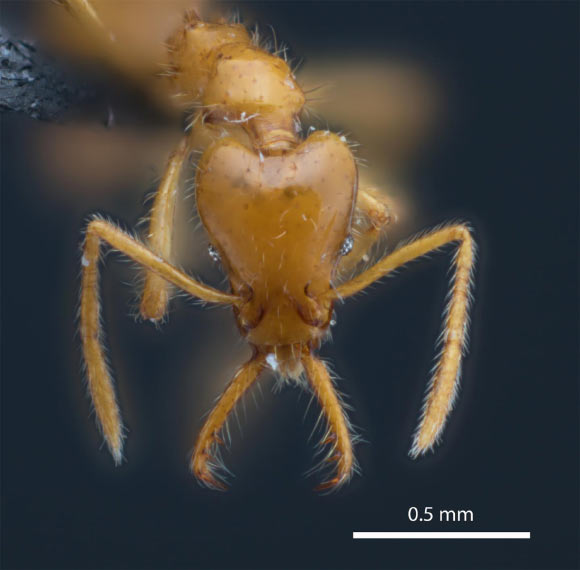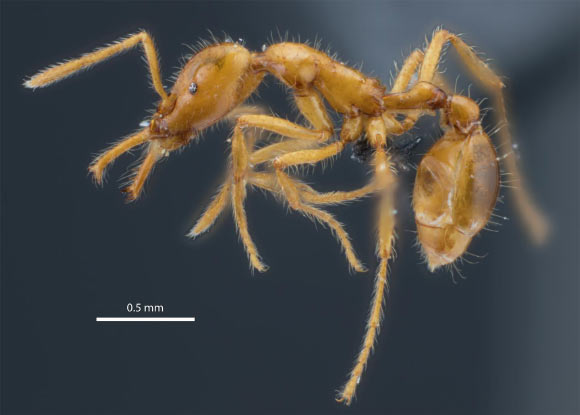Entomologists from the Yale Center for Biodiversity and Global Change, the Georgia Museum of Natural History, and the Technical University of Darmstadt have discovered a new species in the ant genus Strumigenys living in the evergreen tropical forests of Ecuador.

Head of Strumigenys ayersthey in full-face view. Image credit: Booher & Hoenle, doi: 10.3897/zookeys.1036.62034.
Ecuador has one of the highest animal and plant species richness of any country, both in terms in of species per area and total species richness.
This unusually high diversity is due to the three very distinct bioregions within Ecuador: the Amazon basin in eastern Ecuador, the Chocó-Darién bioregion in the northwest, and the Tumbesian drylands in the southern portion of the country.
Of these, the areas west of the Andes have been the least studied, and particularly the Chocó-Darién is a hotspot for new, previously unknown ant species.
The trap-jaw ant fauna of Ecuador currently includes 51 species, several of which are endemic.
The new, likely endemic, species from the Ecuadorian Chocó contributes to a better understanding of this hyperdiverse region.
Named Strumigenys ayersthey, the species can be distinguished by its predominantly smooth and shining cuticle surface and long trap-jaw mandibles, which make it unique among other members of its genus.
“In the case of the new ant found in the forests of Ecuador, its large trap-jaw mandibles and shining and smooth cuticles set it apart from more than 850 species of its genus, Strumigenys,” said Dr. Douglas Booher, a taxonomic expert at the Yale Center for Biodiversity and Global Change and the Georgia Museum of Natural History and co-author of a paper in the journal ZooKeys.

Profile of holotype specimen of Strumigenys ayersthey. Image credit: Booher & Hoenle, doi: 10.3897/zookeys.1036.62034.
Curiously, it was no other but lead singer and lyricist of the American alternative rock band R.E.M. Michael Stipe that joined Dr. Booher in the writing of the etymology section for the paper.
This is the part in the publication, where the authors honor their mutual friend, activist and artist Jeremy Ayers and explain the origin of the species name.
“In contrast to the traditional naming practices that identify individuals as one of two distinct genders, we have chosen a non-Latinized portmanteau honoring the artist Jeremy Ayers and representing people that do not identify with conventional binary gender assignments, Strumigenys ayersthey,” they said.
“Such a beautiful and rare animal was just the species to celebrate both biological and human diversity,” Dr. Booher added.
“Small changes in language have had a large impact on culture. Language is dynamic and so should be the change in naming species — a basic language of science.”
_____
D.B. Booher & P.O. Hoenle. 2021. A new species group of Strumigenys (Hymenoptera, Formicidae) from Ecuador, with a description of its mandible morphology. ZooKeys 1036: 1-19; doi: 10.3897/zookeys.1036.62034







